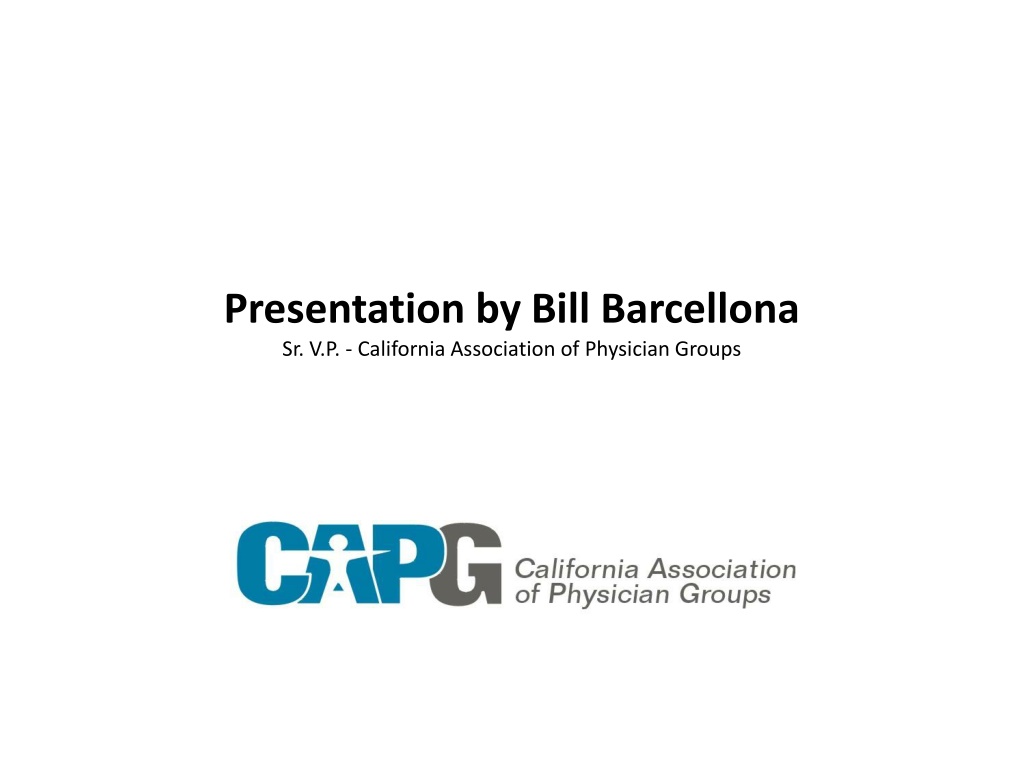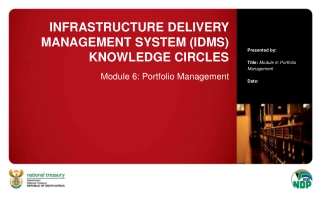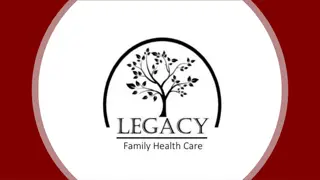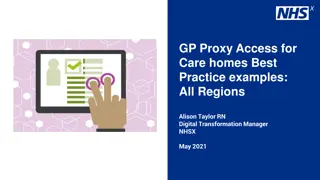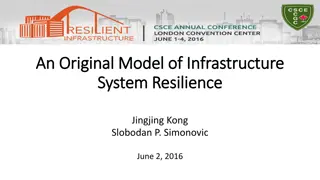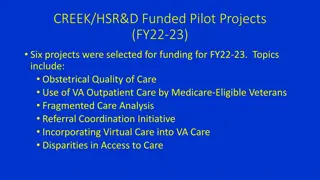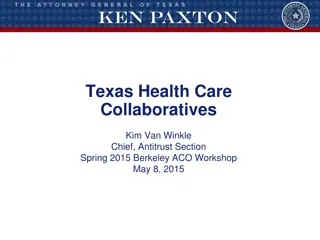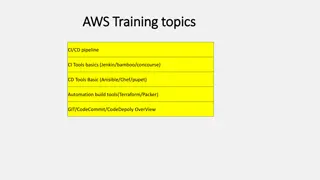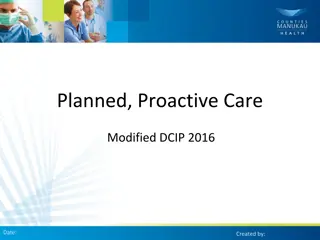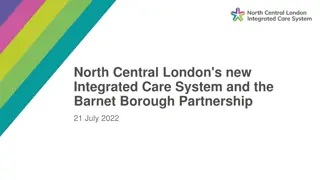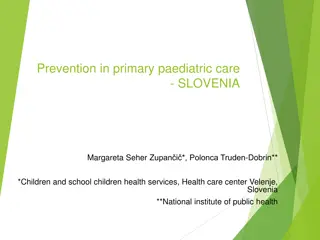Healthcare Delivery System Infrastructure and Care Transformation Model in California
The presentation by Bill Barcellona, Sr. V.P. of California Association of Physician Groups, highlights key statistics on delegated physician groups in California, the state's patient population distribution, and the robust delivery system infrastructure with a focus on advanced primary care programs. The care transformation model emphasizes various aspects like clinical systems, accountable care organization, skilled nursing facilities integration, incentives for efficiency and quality, patient-centered medical home, prevention and wellness initiatives, and patient engagement strategies.
Download Presentation

Please find below an Image/Link to download the presentation.
The content on the website is provided AS IS for your information and personal use only. It may not be sold, licensed, or shared on other websites without obtaining consent from the author. Download presentation by click this link. If you encounter any issues during the download, it is possible that the publisher has removed the file from their server.
E N D
Presentation Transcript
Presentation by Bill Barcellona Sr. V.P. - California Association of Physician Groups
Delegated Physician Groups Patient Population of California = 38 m 18 m Delegated Groups Remaining Population
Delivery System Infrastructure 67,000 Active-practice physicians 200 California delegated physician groups Employ 20,000+ primary care physicians 59,000 total physicians in system Serve all payers Commercial, Medicare, Medi-Cal managed care Serve as physician recruiters and employers as demand for services increases
ADVANCED PRIMARY CARE PROGRAM Slides courtesy of John Jenrette, MD CEO, Sharp Comm. Med. Group
Care Transformation Model Clinical Systems Accountable Care Organization Skilled Nursing Facilities SNFists On-site Case Management Efficiency Rating Systems Preferred Facilities Hospitals Service Line Integration Medical Staff Alignment Incentives for Efficiency Quality (SCIP, Leap Frog) Safety Ancillary Services Free-Standing ASC & Diagnostic Testing Centers Home Care Home Safety Visits Post Discharge Visits Home Health Medical Group & Enterprise Level Activities PCP/SCP Incentives Pay for Performance Hospitalists, Post Discharge Follow-Up Care management (Acute, Chronic, Inpatient, SNF) Health Coaching (Shared Decision Making) Outcomes & Evidence Based Medicine Call Coverage ER Avoidance Programs Urgent Care End of Life (Palliative Care) DME Integration & Oversight by Care Management Transitions of Care Coordination of Behavioral & Mental Health Services Hospice Home Palliative Care Advanced Primary Care Under Patient-Centered Medical Home Prevention & Wellness Point of Care Analytics & Clinical Decision Support Gaps in Care Population Management & Chronic Care Registries Generic Prescribing Program Cost Effective Medical Management & Utilization of Services (SCP, Ancillary) Access, Same Day Appointments, e-Visits Patient Satisfaction & Loyalty Provider & Office Staff Satisfaction Patient & Family Personal Health Record Patient Portal Health Risk Assessment Patient Engagement & Activation
Care Transformation Model Clinical Systems Advanced Primary Care Under Patient-Centered Medical Home Prevention & Wellness Point of Care Analytics & Clinical Decision Support Gaps in Care Population Management & Chronic Care Registries Generic Prescribing Program Cost Effective Medical Management & Utilization of Services (SCP, Ancillary) Access, Same Day Appointments, e-Visits Patient Satisfaction & Loyalty Provider & Office Staff Satisfaction Patient & Family
Care Transformation Model Operational Systems and Structure Advanced Primary Care Under Patient-Centered Medical Home Work Flow Redesign & Process Changes Education of Staff, PCPs, Team Measurement Sets, Dashboards Point of Care Analytics Job Descriptions for Additional Staffing Adequate Primary Care Base Financial Modeling Patient & Family
